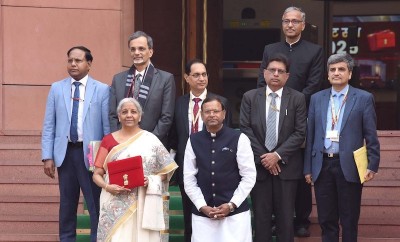 Hydrogen Demand
Hydrogen Demand
Demand for hydrogen expected to rise to 8 million tons by 2030, finds study
Bengaluru: A new report by Bengaluru-based think tank, the Center for Study of Science, Technology and Policy (CSTEP) examines the status of hydrogen technologies and envisages what a hydrogen economy could look like for India in the future.
Specifically, it identifies sectors that could drive hydrogen demand in the future, and estimates the amount of hydrogen that is likely to be produced in-situ or delivered from other production locations.
The study estimates a hydrogen demand of 8 to 8.8 million tons (Mt) by 2030, which is expected to rise to 15-19 Mt by 2047. It finds that though the demand from refineries and fertiliser sectors will continue to exist, hydrogen demand will primarily be driven by the growth of green hydrogen use in sectors such as steel, heavy-duty freight, and blending in city-gas-distribution (CGD) grids.
Currently, green hydrogen demand in the country is negligible, with hydrogen use limited to the fertilisers and refineries sectors.
But this demand is expected to rise with the introduction of hydrogen in the steel, heavy-duty freight, and CGD-blending sectors.
Some green hydrogen demand is also expected from the fertilisers and refineries sectors as they transition away from fossil fuels.
The study looked at two growth scenarios for the overall demand-supply projections: highgrowth, and medium-growth.
The demand for green hydrogen in the high-growth scenario is expected to grow from 2 Mt in 2030 to 9.6 Mt in 2047, accounting for almost 50% of the total hydrogen demand in 2047.
In the medium-growth scenario, green hydrogen demand is expected to grow from 0.9 Mt in 2030 to 4.4 Mt in 2047. The study also finds that electrolysis technologies will dominate green hydrogen production with a market share of 80-90%.
“Within electrolysis, alkaline and PEM electrolysis are expected to be the dominant technologies adopted in the long term,” says the study. In the context of storage and transportation of hydrogen, the study finds that in the short term, modular, mature systems like compressed or liquefied hydrogen, and ammonia would be used extensively, while in the long-term future, hydrogen pipelines are also expected to be a key component, potentially transporting over 45% of the hydrogen demand by 2047.
The study calculated the total annual costs of hydrogen storage and transportation for both scenarios.
In the high-growth scenario, the total annual costs rise from INR 0.43 lakh crore in 2030 to INR 1, 75 lakh crore in 2047.
In the medium-growth scenario, the annual costs rise from INR 0.27 lakh crore in 2030 to INR 1.15 lakh crore in 2047 2 www.cstep.in
The study recommends hydrogen production from biomass residue near agrarian set-ups, and scaling up of domestic electrolyser manufacturing as measures for moving towards a future hydrogen economy in India.
Support Our Journalism
We cannot do without you.. your contribution supports unbiased journalism
IBNS is not driven by any ism- not wokeism, not racism, not skewed secularism, not hyper right-wing or left liberal ideals, nor by any hardline religious beliefs or hyper nationalism. We want to serve you good old objective news, as they are. We do not judge or preach. We let people decide for themselves. We only try to present factual and well-sourced news.







